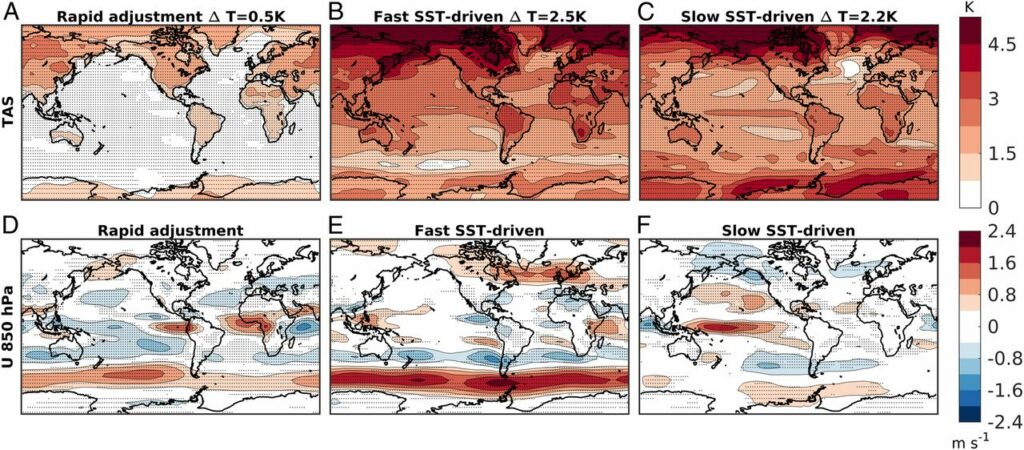Significance
One of the most impactful aspects of climate change is the potential change in water availability. Large populations live in Mediterranean-like regions—so-called because they receive most of their precipitation in winter and experience dry, hot summers—which are highly vulnerable to water stress. It is generally assumed that changes in water availability are proportional to global warming. In this study, we show that this is not the case for Mediterranean-like regions, because of the strong influence of changing patterns of atmospheric circulation induced by patterns of sea-surface-temperature changes. In the Mediterranean itself and in Chile, the projected drying is substantially accelerated relative to global warming, whereas in California, the projected moistening is substantially delayed.
Abstract
Greenhouse gas (GHG) emissions affect precipitation worldwide. The response is commonly described by two timescales linked to different processes: a rapid adjustment to radiative forcing, followed by a slower response to surface warming. However, additional timescales exist in the surface-warming response, tied to the time evolution of the sea-surface-temperature (SST) response. Here, we show that in climate model projections, the rapid adjustment and surface mean warming are insufficient to explain the time evolution of the hydro-climate response in three key Mediterranean-like areas—namely, California, Chile, and the Mediterranean. The time evolution of those responses critically depends on distinct shifts in the regional atmospheric circulation associated with the existence of distinct fast and slow SST warming patterns. As a result, Mediterranean and Chilean drying are in quasiequilibrium with GHG concentrations, meaning that the drying will not continue after GHG concentrations are stabilized, whereas California wetting will largely emerge only after GHG concentrations are stabilized. The rapid adjustment contributes to a reduction in precipitation, but has a limited impact on the balance between precipitation and evaporation. In these Mediterranean-like regions, future hydro-climate–related impacts will be substantially modulated by the time evolution of the pattern of SST warming that is realized in the real world.

Zappa, G., Ceppi, P., & Shepherd, T. G. (2020). Time-evolving sea-surface warming patterns modulate the climate change response of subtropical precipitation over land. Proceedings of the National Academy of Sciences, 117(9), 4539-4545.
